Taiga Plants
Since in the taiga biome there are harsh weather conditions not many plants survive in the region. The common plants that live there are conifers and evergreens with long, thin, and waxy leaves. The needle-shaped leaves reduce water loss and protect from being weighed down by snow. The plants grow close to each other as an adaptation from the harsh wind and cold weather.
Black Spruce
The black spruce is a plant that can grow up to 25 meters! An old spruce can resemble a very tall spike. The black spruce can survive in this environment because it can grow in poor soil and cold climates. The branches are shorter than other conifer trees. Sharp needles are about 1/2 inch long. The bark is rough and thick and has a brownish-gray color. The pinecones on this tree is a major food source for other birds in the taiga.
Balsam Fir
The balsam fir is a medium sized fir. It can grow up to 80 feet tall! They have a wide base and a narrow top. Balsam firs have a very shallow root system that barely goes 35 inches. The branches grow at a right angle to the main stem. Often, the lower branches of a tall balsam are dead and droop to the ground. The leaves are dark green on the top and white on the bottom. Balsam fir's leaves are very short only 1 1/2 inch long. The leaves are flat with a curve and rounded at the tip. The bark of a balsam fir is smooth and are gray in color. This conifer is a major food source for deer, moose, squirrels and other animals that live in this cold climate.

Balsam Fir

Black Spruce
Jack Pine
The jack pine grows up to 27 meters. They are a shorter and a shrub species. Young jack pines have reddish-brown color for bark and the older ones have gray colored ones. The leaves are long and slender and have needles. The characteristics help them to adapt during the snowfalls and weather conditions. Jack pines are found in semi-cold regions in the taiga with sandy soils. The pinecones develop near the branch and curve at the tip. Leaves and the cones of jack pines are a source of food for the rodents and other small animals in the taiga.

Jack Pine
Tamarack
The tamarack is a medium-sized conifer that grows up to 20 meters. It has a narrow crown, thin scaly bark, and long slender branches. The bark of a young tamarack is gray and smooth and as it gets older it turns reddish-brown and gets scaly as it ages. Tamaracks have soft very slender needles in small clusters of 12 to 20 needles and are 10 to 25 mm long. The needles turn pale green to yellow in the fall when they start falling off the tree. Male and female cones could appear on the same branches. The cones look a lot different (gender wise). The male's cones look like small mounds of brown and yellow pollen sacs with papery scales at the base. The female's seed looks like a small pine cone. At flowering time the seeds turn anywhere from dark red to purple. Later on they are dark brown in color. Matured seeds are 1-2 cm long, oval shaped and are found on short, curved stalks.

Tamarack
There are not a lot of different species of plants because they don't always survive the harsh winters. Lichens and mosses also live in the taiga.
 Lichen
Lichen
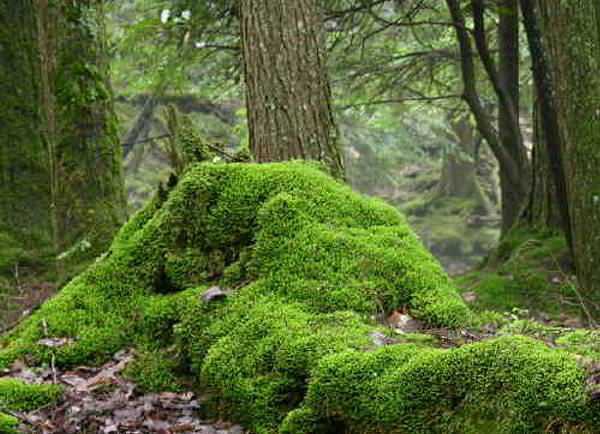 moss
moss
Fun Facts!!!
The taiga is an ecosystem, or biome, that makes up a significant part of Canada and the northern regions of Asia and Europe. The taiga is the world's largest biome and primarily comprises coniferous trees, which are made up of needles and stay green year round. The taiga biome is also known as the boreal forest.
 Taiga
Taiga
Precipitation & Temperature
In the taiga, the average temperature was below freezing for 6 months of the year. The precipitation yearly is about 12-33 inches. The cold winters are FREEZING. Most of the precipitation comes during the warm, humid months. In the winter there are long nights and in the summer are long days. During the summer since its warm it gathers millions of insects. Birds migrate there so they can have their insect feast. The taiga is known for wildfires. Many trees have bark that are adapted to protect mild fires.
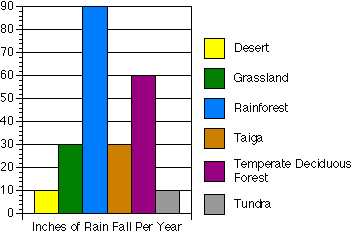
| Taiga Temperatures |
| |
Low |
High |
| Winter |
-65 F (-54 C) |
30 F (-1 C) |
| Summer |
20 F (-7 C) |
70 F (21 C) |
Taiga Animals
Red Squirrel
Red squirrels live in the taiga region. They are 20-24 cm. Their tail is 15- 20 cm. Red squirrel's scientific name is Sciurus Vulgaris. Their diet is conifer cones, fungi and fruit. Red squirrels are nearly threatened. They live in evergreen forests in Europe, east of China, Korea and Japan. The length of breeding season is lengthened by the local climate. In a good year a female could produce 2 litters which is about 3 young each. The young are born in a tree nest, called a drey and is used like a winter quarters.
Lynx 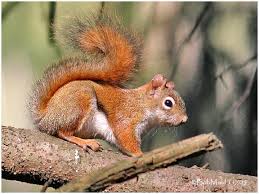
The lynx is recognized by its short tail and its tufted ears and cheeks. Their color of coat varies in color. Lynxes strictly protected in most countries, lynx are becoming scarce, and some races are in danger of extinction. A solitary, nocturnal animal, the lynx stalks its prey on the ground or lies in wait for it in low vegetation. Hares, rodents, young deer and ground-living birds, such as grouse, are its main prey. Breeding normally starts in the spring, and a litter of 2 or 3 young is born in a den among rocks or in a hollow tree after a gestation of about 63 days. The cubs remain with their mother throughout their first winter.
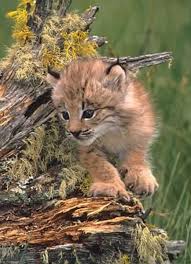
Eurasian Beaver
The Eurasian beaver is the largest rodent. Eurasian beavers are 73 cm-1.3. Their scientific name is Castor Fiber. They now only live in parts of Scandinavia, Poland, France, Southern Germany, Austria and Russia. These animals are nearly-threatened. Eurasian beaver’s habitat is in rivers, lakes and wooded banks. These animals are monogamous. Eurasian beavers are said to be mated for life.
Moose
Moose are the largest of deer. They are identified by their size and their jiggle thing under their throat. Their size is 2.5-3 m. Their scientific name is Alces alces. Their living range is northern Europe and Asia, Scandindavia to Siberia; Alaska, Canada and northern USA. They are starting to enter New Zealand. Moose habitat is in coniferous forests often by rivers and lakes. Moose swim really well. Their diet is plants. Females give birth to 1 calf and very rarely twins. The baby stays with mommy for 1 year before it is off on its own.
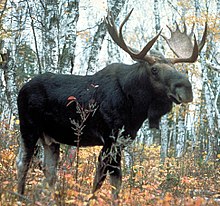
Wolverine
Wolverines are carnivore mammals. They eat mostly meat and sometimes berry. Their body size is 66 to 87 cm. Wolverine’s scientific name is Gulo Gulo. Their range of life is Scandinavia, Siberia, Alaska, Canada and northern USA. They live in the coniferous forest. They feed on small mammals and small ground-dwelling birds.
Habitat
Taiga is the Russian word for forest and is the largest biome in the world. It stretches over Eurasia and North America. The taiga is located near the top of the world, just below the tundra biome. The winters in the taiga are very cold with only snowfall. The summers are warm, rainy, and humid. A lot of coniferous trees grow in the taiga. The taiga is also known as the boreal forest. The taiga doesn't have as many plant and animal species as the tropical or the deciduous forest biomes. It does have millions of insects in the summertime. Birds migrate there every year to nest and feed.
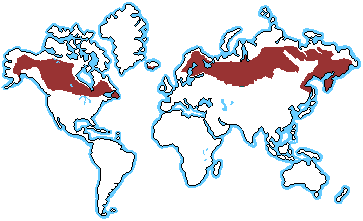

Comments (4)
LeishionaD2 said
at 10:08 am on Jun 5, 2012
amberwhat is your topic?
AmberO2 said
at 5:31 pm on Jun 5, 2012
plants
RosemarieT2 said
at 8:38 am on Jun 6, 2012
thank u so much amber! u are a great help!
Ryan Cowen said
at 9:26 am on Jun 8, 2012
This was one of the best wiki pages! Nice job team!
You don't have permission to comment on this page.